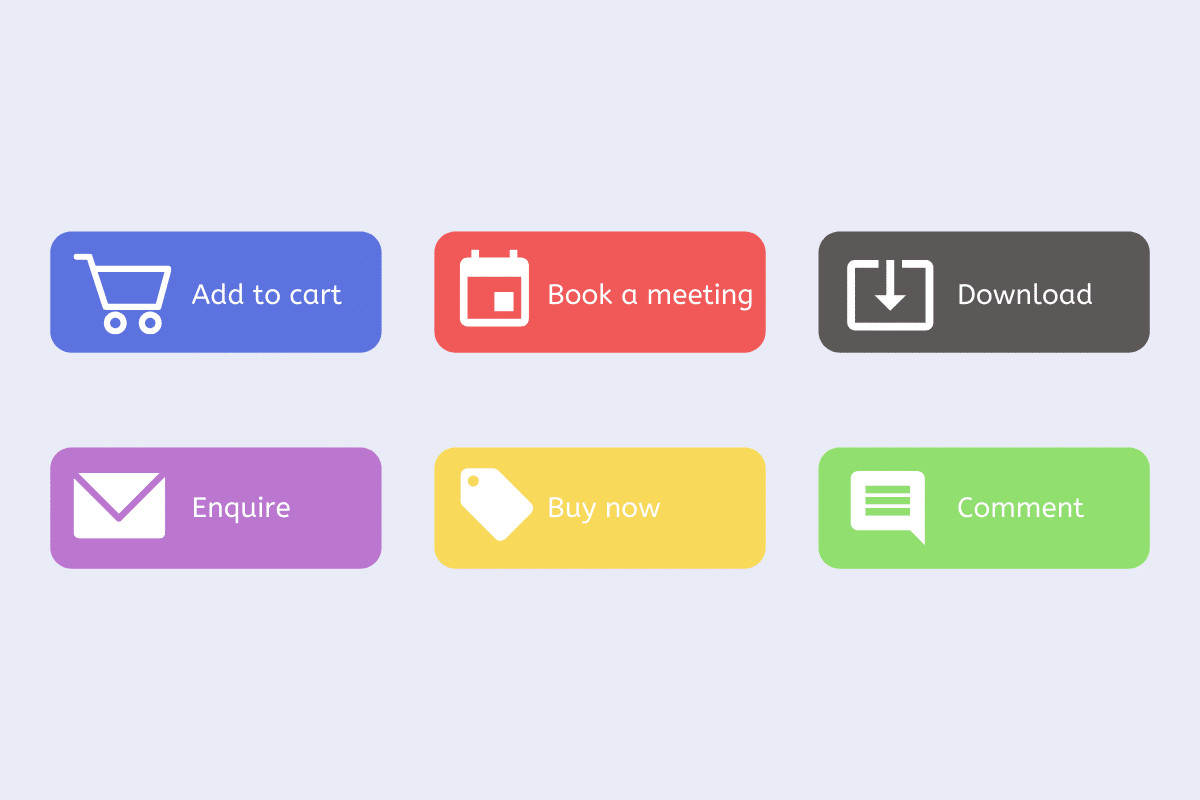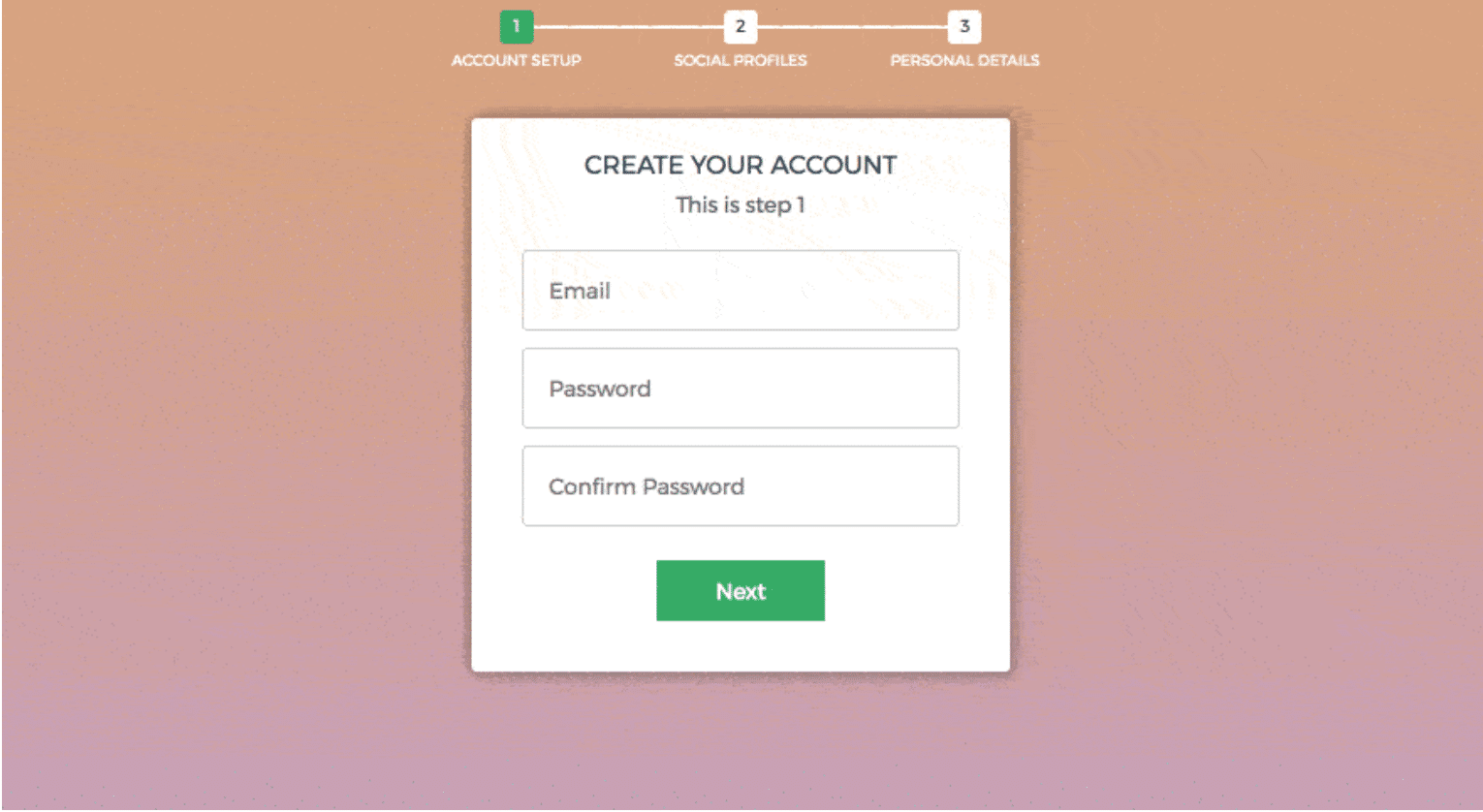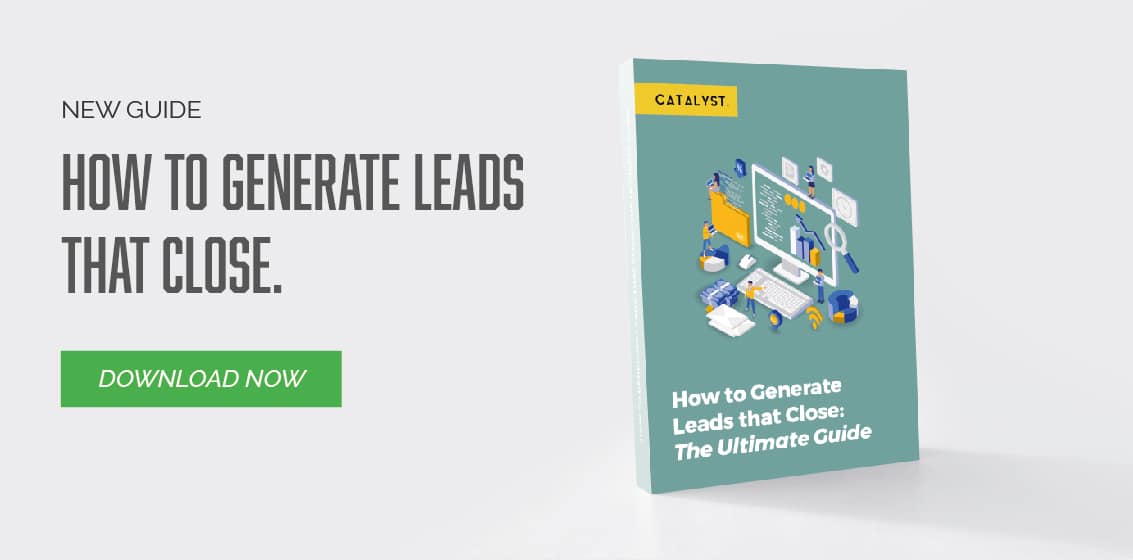Benjamin Franklin once famously said that there are two things certain in life: death and taxes.
We could however add a third one to the list: business owners looking for new ways to generate more quality leads.
Optimising your website for lead generation is one of the best ways to convert the traffic you’re already getting into customers.
However, if you think you can just add a couple of “Click Here” CTAs to your homepage and suddenly generate loads more leads then sadly, you’re mistaken.
In this article, we will outline the 8 features that we believe to be the most important for generating leads through your website.
Your website is your first impression, your shop window.
It’s how most people perceive your company in the modern era. In some cases, it can be the difference between signing a client or losing one.
We know how hard lead generation is, so why not equip yourself with a website that can boost this?
1. Live chat and chat bots
A great addition to any website. You can jump into a conversation with anybody that visits your website in order to advise, direct, help and sometimes even sell. The live chat will usually appear at the bottom of the web page, an automated message like “Can I help you today” will appear and from that, you can begin your conversation.
You act as a digital customer service. It is important that the live chat does not appear on every page of your website as this may be seen as annoying to the user, well it would to me! You should enable your live chat on your homepage and then your services page. As the Homepage is the first page the user will typically see when they click on your website, the live chat pop up should act as a greeting message. For services, it could be offering advice or help to the user regarding your product.
Chat bots are a tool to further develop the live chat feature. A chat bot is a piece of software providing automated, predetermined responses that are programmed to behave like a human would do. You’ve most likely experienced these when messaging brands on Facebook, their websites or even using Alexa / Siri – (these are effectively chat bots).
Chat bots are great because they save you time in the long run, by helping to qualify leads and queries automatically. Once set-up all you have to do is occasionally check-in to ensure the messaging is still fit for purpose and then you’re good to go!
2. Downloadable content

Downloadable guides, blogs, and insights are all great for data capture as well as allowing the visitor to interact directly with your website.
Downloadable content starts off the sales process, if the content has been downloaded it means that the prospect has already registered an interest in your product or service. That awkward cold call is then avoided so the salesperson can start to push warmer, down-the-funnel content to the prospect.
By simply adding a CTA you have saved yourself dozens of cold calls.
Downloadable content also makes your site much more interactive. You can capture data about the user by adding a form to fill in before they download the content. The data is then saved and put it into your CRM. You can then create workflows in which the user will receive other pieces of content.
Remember though, in order for people to download your content there must be value in it for them. Otherwise you will end up getting a lot of clicks to the landing page but few downloads because if users won’t give their contact details for something they don’t see value in. If you spend time and resources to produce a quality piece of content with real value, then you will see ROI.
3. Dynamic & Smart CTAs

It’s not enough just to add a “Click here” or “Learn more”, CTAs have been an ever-present in recent times so it is important that your CTAs are bold, unique and relevant to whatever is on your website, blog, guide etc.
The call to actions role goes way beyond just a colourful button with a command in it, they are in some cases small subtleties that can make a huge difference.
There are 2 types of CTA, primary and secondary.
Primary CTAs are where you want your customers to take an action e.g “Buy now”, “Apply now”.
Secondary CTAs is where you’re aiming to educate the users about certain topics or services. For example, “Learn More”, “Keep reading”. The goal here is to provide further information and detail to the customer.
A lot of marketing platforms out there now have intuitive systems to help with the CTA creation. For example, HubSpot has the ability to build “Smart CTAs” which help optimise the website experience for your visitors, prospects and leads.
Essentially Smart CTAs show the right content to the right contact at the right time using dynamic content. The CTA will change depending on the visitor viewing it. So instead of one size fits all, you can have a different CTA for different users depending on the criteria you choose.
This helps personalise your brand experience to your visitors depending on their stage in the funnel.
4. Nurture leads through a workflow
Leads are only as good as your nurturing efforts.
No lead is a guaranteed sale so you need to ensure you nurture them just right so they move down through your sales pipeline to the decision stage of your sales cycle.
Once the lead has downloaded a piece of your content you can place them into a workflow. You can then deliver valuable and relevant content that benefits their interests.
e.g. If a lead had downloaded our “ 7 Steps to a Successful Website Redesign” we wouldn’t send them content on topics such as SEO or Lead generation, we would continue to feed our prospect relevant content around the topic they initially expressed an interest in and continue to keep them engaged with our services.
Your aim should be to drive the lead down through the sales funnel until they are in a position to buy. Warm, automated (yet still personal) emails can help accelerate the sales journey.
Companies that nurture their leads see 50% more “sales ready leads” than their non-nurturing counterparts at a 33% lower cost according to Forrester Research.
5. Forms

We previously mentioned forms for downloadable content. It’s another method of data capture for your business. Forms store necessary details and information surrounding the user, most commonly; Name, Gender, Business, Email and Number.
Forms should be added to the pages on your website which attracts the most traffic. By setting up Google analytics you can see how many people are visiting your website and how many are actually clicking on the form itself.
Forms also help build your email list. If your criteria involves an email address when completing a form on your website, you can then add it to your mailing list. (However, be sure to include a GDPR compliant checkbox to permit you to do so). The more prospects you have in your mailing list the higher chance you’ll have of receiving a download, an enquiry or a call back through your content.
6. Testimonials and Past Work
When buying a new product, how often do you look for recommendations on which is the best one to buy? For me it’s probably around the 90% mark. With so much choice available to us at a click of the button we want to be sure that we’re getting the best value for our money and therefore look for reviews and testimonials to help us make that all important buying decision.
So why aren’t you using your happy customers testimonials to help push your product?
Psychological Science published a study which highlighted that when given a choice between two similar products, most people will opt for the one with the most reviews.
More recently, TrustPilot found that 92% of consumers say buying decisions are influenced by online reviews. They also found that;
- 72% of consumers will take action after reading a positive review
- 88% of consumers trust reviews as much as personal recommendations
Although these findings are primarily focused on B2C, there is also evidence of reviews and testimonials becoming increasingly important within the B2B decision making process as well.
The Benchmark Report: The Impact of Reviews on B2B Buyers and Sellers found that 92% of buyers are more likely to purchase a product or service after reading a trusted review. However only 43% of B2B businesses are currently using reviews as part of their marketing strategy.
This shows the huge potential for businesses both B2C & B2B to not only add testimonials to your site but also the need for platforms such as TrustPilot.
Your website is also a good opportunity to showcase your product and service. Rather than using stock images (which damage your websites ranking within SEO), you should use examples of your work. For example within each testimonial on our clients page we include images of the work we’ve done for that client, helping to not only build trust in our skills but also credibility.
7. Pop-ups
If used in-correctly pop-ups can be a nuisance for any user. But, when implemented strategically and with some thought they can be more than useful. The key with a pop-up is to not use them so early on or on every single page. The last thing anybody wants to see are giant pop up ads in their face the second they have logged on to your page.
You should have a trigger set for the pop-up e.g. if they scroll to a particular section on your site, or onto a specific page. Some pop-ups can be extremely useful as they can spark conversations and capture the attention of the user instantly.
Amazon have a very good pop-up configuration, it isn’t too big and promotes a very clear message. It’s a pop-up box next to “Your Account” saying “log in, New Customer? Start here”. Another time can be when a user has visited a landing page but chosen not to download the content piece, perhaps they didn’t want to share a lot of details. The setting will be for a pop-up to appear on another page with a message along the lines of ‘Didn’t want to share all your details for the guide? Simply input your email below and we’ll send a copy straight to your inbox.’
You may not have captured all their details but you’re one step closer than you would’ve been before.
8. Test, Test and Test again

The most important feature, ok so it’s not quite an actual feature as such but it is a vital step for any website, and is something that most business owners do not pay enough attention too, is testing.
Methods such as A/B testing are highly effective and have also been known to increase your clickthrough rates (CTR).
A/B testing is the process of comparing two versions of a web page, email, or other marketing assets with just one varying element
Testing simple features on your websites such as CTAs, the layout of your landing pages, images and different types of content can have a huge impact on the success of your website.
Trial and error until you find the most effective piece.
Conclusion
More and more lead generation websites are now being developed. As a salesperson or business owner, it’s about being proactive.
As a business, you depend on leads to survive and to grow your business. Using the tips above, the challenge of turning your website visitors into leads just got a little easier.
Your Website Report
Now you know how to convert those leads it’s the right time to see how else you can improve your website. Click the link below for your free personalised insight report that will benchmark your business against three of your chosen competitor websites.
This will help you understand what can be improved to help you stand out from your competitors and grab the attention of your target market.
{{cta(‘edafcc8a-f3c7-4ab0-9332-92c745e50ffc’)}}
Recommended reading
- Your Website = Your Online Shop Window – Why is it important?
- How to Make a Successful Website – 8 Audit Questions to Ask
- 7 Steps to Approaching a Successful Website Redesign
- Achieve Effective Digital Marketing – 4 Questions to Ask



